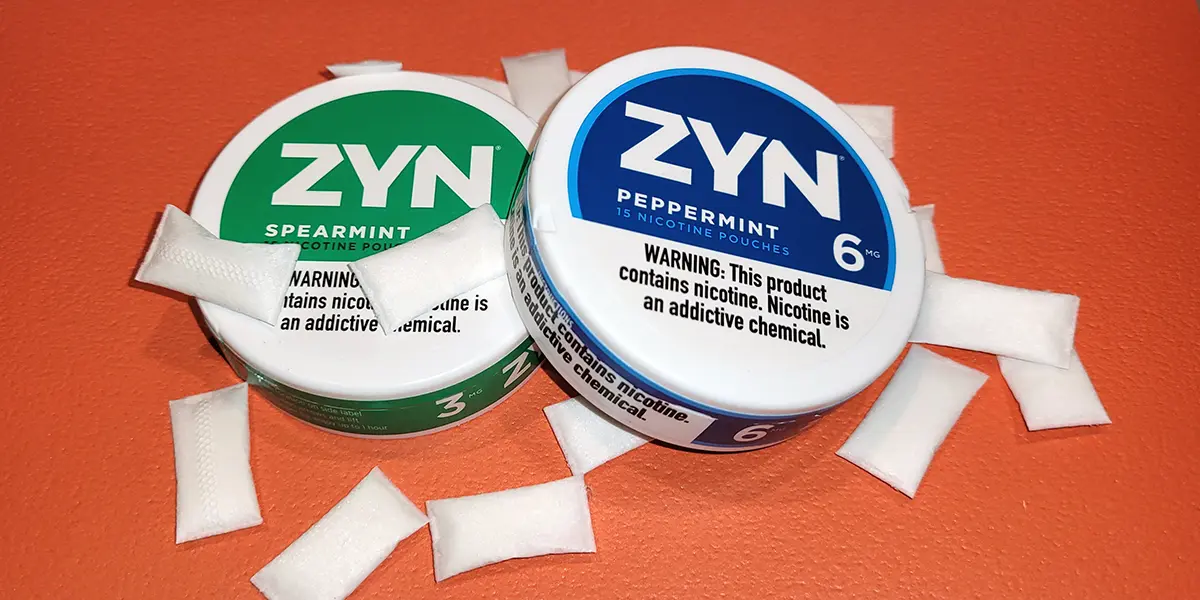Ever feel like you could just… fall asleep mid-conversation? Like your body drifts off even when your mind’s screaming stay awake? If so, you’ve probably wondered if it’s normal fatigue or something deeper — maybe even a sleep disorder. That’s where the Do I Have Narcolepsy Quiz comes in — not as a diagnosis, but as a mirror.
A way to check whether your constant tiredness, sudden naps, or those weird half-dream moments might actually be linked to narcolepsy, a chronic sleep disorder that disrupts your sleep-wake cycle.
Narcolepsy isn’t just “being sleepy.” It’s a neurological condition that messes with how your brain regulates REM sleep and wakefulness. People with it often experience excessive daytime sleepiness, sleep paralysis, and sudden muscle weakness called cataplexy.
Some even see vivid dreams or hallucinations right as they fall asleep — moments so real they can shake your confidence in what’s actually happening. But here’s the thing — many people live for years without realizing it. They chalk it up to burnout, bad sleep hygiene, or just “a long week.” Early detection, though, matters.
It can prevent safety risks like sleep attacks while driving and help you reclaim control over your overall health, energy, and mental focus.
So let’s start with something simple: an awareness tool. This next part — your personalized Do I Have Narcolepsy Quiz — helps you understand if what you’re feeling could be part of a broader spectrum of narcolepsy symptoms.
Do I have Narcolepsy Quiz: Check Your Risk in Minutes

Let’s be clear — this Do I Have Narcolepsy Quiz isn’t a medical diagnosis. Think of it more like a flashlight: it shines a bit of light into the darker corners of your daily fatigue, your odd sleep patterns, your maybe-too-frequent naps.
Below is a quick self-assessment quiz designed to help you spot early red flags of narcolepsy, idiopathic hypersomnia, or other sleep-related issues.
| Question | Options | Scoring Tip |
| 1. Do you often fall asleep suddenly during the day, even when active? | Never / Sometimes / Often | “Often” = 3 points |
| 2. Have you ever felt muscle weakness or your knees buckle when laughing or feeling emotional? | Yes / No | “Yes” = 2 points |
| 3. Do you have vivid dreams or see things right before falling asleep or waking up? | Never / Occasionally / Frequently | “Frequently” = 2 points |
| 4. Do you experience sleep paralysis — being awake but unable to move? | Yes / No | “Yes” = 2 points |
| 5. Do you struggle with excessive daytime sleepiness, even after sleeping enough? | Never / Sometimes / Often | “Often” = 3 points |
| 6. Has anyone told you that you talk or move strangely in your sleep? | Yes / No | “Yes” = 1 point |
| 7. Do you experience sudden “blackouts” or “micro-sleeps” during routine tasks? | Yes / No | “Yes” = 3 points |
| 8. Do you wake up frequently at night and feel unrefreshed in the morning? | Never / Sometimes / Often | “Often” = 2 points |
| 9. Do you ever experience hallucinations (visual, tactile, or auditory) during transitions between sleep and wakefulness? | Never / Occasionally / Often | “Often” = 2 points |
| 10. Have you noticed changes in your focus, mood, or memory lately? | Never / Sometimes / Often | “Often” = 1 point |
🧩 Scoring Insight:
- 0–5 points: Probably normal sleep fluctuation — maybe mild insomnia or lifestyle-related fatigue.
- 6–12 points: Possible sleep disorder pattern; consider improving sleep hygiene and tracking symptoms.
- 13+ points: Strong indicators of narcolepsy or excessive daytime sleepiness disorder. You may want to consult a sleep specialist for a sleep study or Multiple Sleep Latency Test (MSLT).
Pro Tip:
Keep a sleep diary noting bedtimes, naps, and symptoms—it helps doctors assess you accurately using tools like the Epworth or Swiss Narcolepsy Scale.
I. Sign #1: Excessive Daytime Sleepiness — The First Red Flag
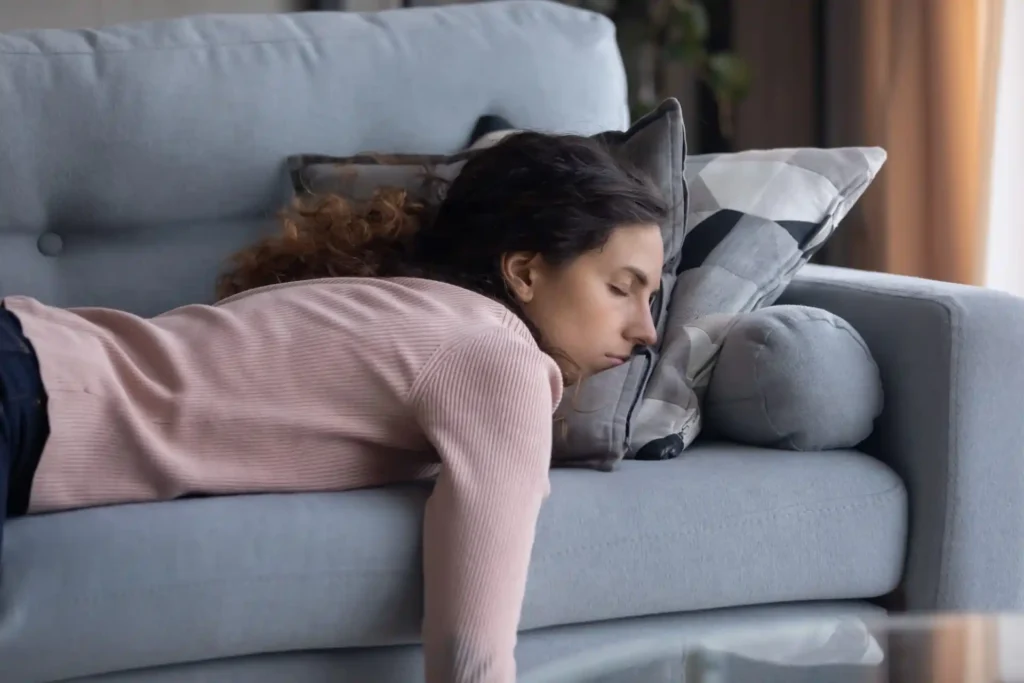
You know that feeling when your eyelids start drooping right after lunch, or maybe even mid-meeting, and you tell yourself it’s just exhaustion? We all do it — we rationalize, “I just need more coffee,” or “I didn’t sleep well last night.” But if that wave of excessive daytime sleepiness keeps coming even after what should’ve been a full night’s rest, you might be looking at something beyond everyday fatigue.
That’s the quiet alarm bell behind the Do I Have Narcolepsy Quiz — the one most people ignore. Narcolepsy’s first and most common sign is that irresistible sleepiness that doesn’t play by the rules. It’s not about staying up too late scrolling or binge-watching — it’s your brain’s sleep-wake cycle getting confused.
Instead of maintaining alertness, your body slips too easily into REM sleep, sometimes skipping the usual stages altogether. Scientists say it happens because of changes in certain brain chemicals, especially orexin (hypocretin) — the neurotransmitter that helps keep you awake.
When those levels dip, the body can’t stabilize sleep patterns, leading to what doctors call hypersomnia or excessive daytime sleepiness disorder. But what’s tricky is how it creeps into life. You start nodding off during calls, zoning out mid-sentence, or catching yourself drifting while driving (which can be terrifying, honestly). It can look like burnout or even depression — but the difference is, rest doesn’t fix it.
Here’s a quick comparison to help you tell the difference:
| Fatigue Type | Typical Cause | Feels Better After Sleep? | Possible Condition |
| Normal tiredness | Long day, stress, dehydration | ✅ Yes | None |
| Burnout fatigue | Mental overload, poor rest | ⚠️ Somewhat | Stress-related |
| Excessive daytime sleepiness | Neurological disruption, REM intrusion | ❌ No | Narcolepsy / Sleep disorder |
If this sounds like you — and your Do I Have Narcolepsy Quiz score leaned high — you might want to see a sleep specialist. They can run a Multiple Sleep Latency Test (MSLT) or Epworth Sleepiness Scale to measure how fast you fall asleep in quiet settings.
These aren’t scary tests — more like long naps in a sleep lab, where your brain activity, muscle movement, and REM onset are recorded for clues.
Pro Tip: Bring notes on your sleep habits, naps, and caffeine use—these details help your doctor distinguish lifestyle issues from true sleep disorders.
II. Sign #2: Cataplexy — Sudden Loss of Muscle Control
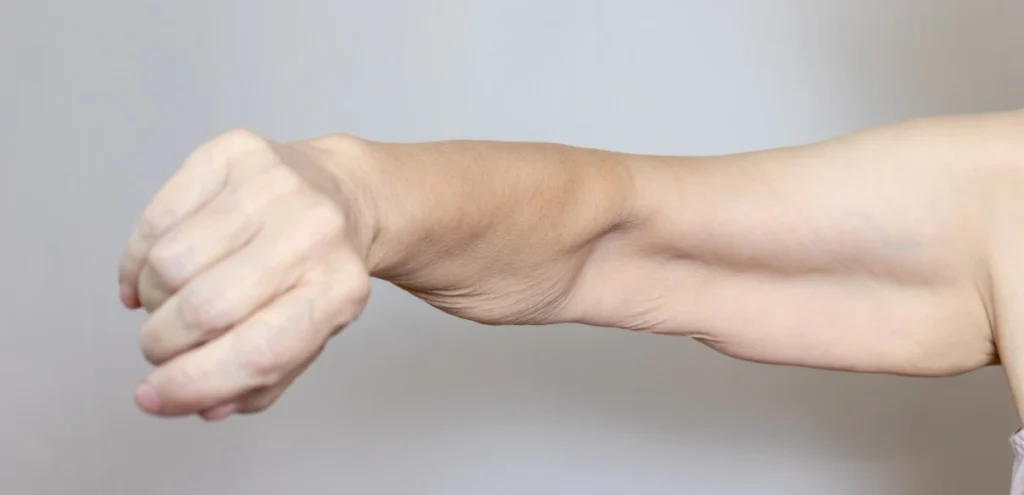
Now, this one’s… strange, to say the least. Imagine laughing at something so hard your knees buckle. Or feeling your jaw slacken when you’re embarrassed. It’s not weakness in the emotional sense — it’s cataplexy, one of the most distinct markers of narcolepsy type 1.
Cataplexy is basically your muscle control giving way, suddenly, often triggered by strong emotions — laughter, excitement, frustration, sometimes even surprise. The rest of your brain is wide awake, but your body reacts as if it’s in deep REM sleep, when muscle activity naturally shuts down. It’s like your emotions hijack your physical stability for a few seconds or minutes.
Researchers link it to hypocretin deficiency, the same brain chemical imbalance behind sleep attacks and daytime drowsiness. When orexin-producing neurons are lost — often due to autoimmune factors — your brain struggles to keep wakefulness and REM separate. That’s why cataplexy can feel so unpredictable and, well, scary.
But not everyone with narcolepsy experiences it. Some people only have excessive daytime sleepiness, while others have the full mix — cataplexy, sleep paralysis, vivid dreams, and hypnagogic hallucinations. Doctors call this range the spectrum of narcolepsy.
To give you an idea of how cataplexy differs from simple fainting or muscle weakness, here’s a quick breakdown:
| Symptom | Triggered by Emotion? | Consciousness Lost? | Typical Duration |
| Cataplexy | ✅ Yes (laughter, fear, excitement) | ❌ No | Seconds to minutes |
| Fainting (syncope) | ⚠️ Possibly (stress) | ✅ Yes | 1–2 minutes |
| Muscle fatigue | ❌ No | ❌ No | Gradual |
People often hide these episodes out of embarrassment, thinking it’s “just stress.” But the right sleep disorders clinic or neurologist can diagnose it through sleep testing and clinical assessment tools like the Narcolepsy Symptom Status Questionnaire or Functional Outcomes of Sleep Questionnaire.
Pro Tip:
Record emotions before each episode—patterns during laughter or anger can help your doctor determine if it’s cataplexy or another sleep issue.
III. Sign #3: Sleep Paralysis — The Scariest Few Seconds
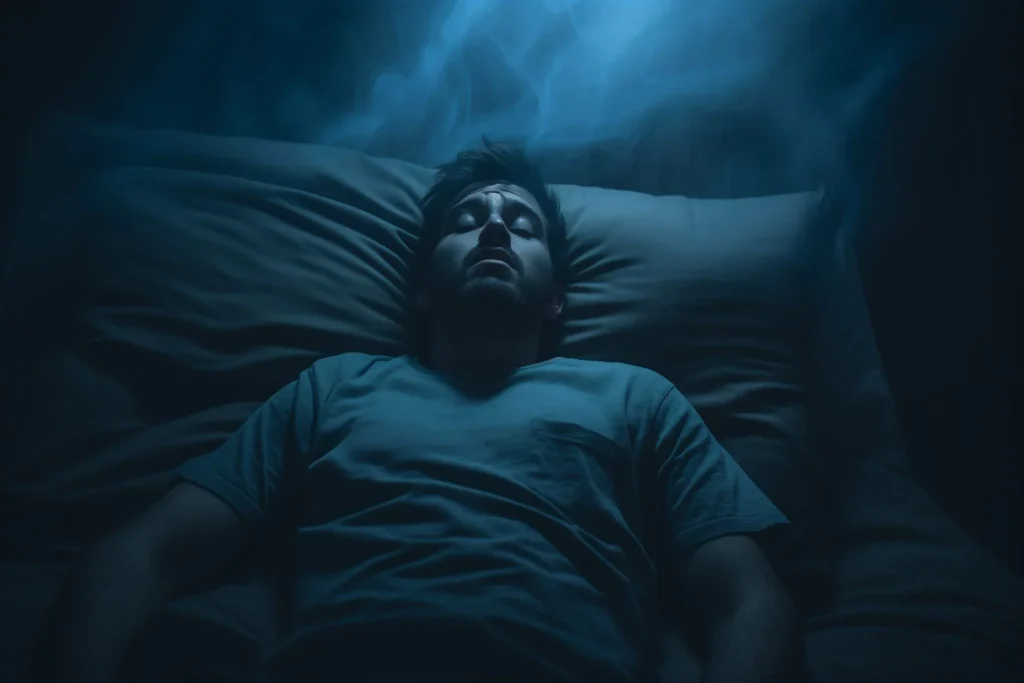
If you’ve ever woken up and couldn’t move — not even to blink properly — you know exactly how terrifying sleep paralysis feels. You’re awake, sort of. You can see your room, hear faint sounds, even sense movement nearby… but your body refuses to cooperate. For a few long, surreal seconds, you’re trapped somewhere between REM sleep and wakefulness.
This is one of those signs that often makes people Google “Do I Have Narcolepsy Quiz” at 3 a.m. — because it doesn’t just happen once. It can repeat, sometimes nightly. Scientists call it REM intrusion — when your brain accidentally lets dream-state paralysis spill into waking moments.
Normally, during REM sleep, your muscles shut down to prevent you from acting out your dreams. But in narcolepsy or REM parasomnia, that paralysis leaks into consciousness.
It’s harmless physically, but emotionally? It’s a nightmare. Many people experience vivid hallucinations during it — hearing whispers, feeling a weight on their chest, or even seeing shadowy figures (the so-called “sleep demon”).
These are known as hypnagogic (as you fall asleep) or hypnopompic hallucinations (as you wake up). Your brain is still dreaming, but your eyes are open. Creepy, right?
Here’s a simple breakdown:
| Type | When It Happens | Common Sensations | Related Sleep Phase |
| Hypnagogic hallucinations | Falling asleep | Visual flashes, floating, hearing sounds | REM onset |
| Sleep paralysis | Between REM and wake | Inability to move, chest pressure | REM intrusion |
| Hypnopompic hallucinations | Waking up | Seeing or hearing dreamlike figures | REM offset |
People with narcolepsy often report these as their most unsettling symptom. The good news? They’re not signs of psychosis or anything supernatural — they’re just sleep disturbances caused by dissociated sleep cycles.
Pro Tip: During episodes, focus on grounding—like counting breaths or wiggling toes—and discuss them with your sleep specialist for proper management.
IV. Sign #4: Hallucinations When Falling Asleep or Waking Up
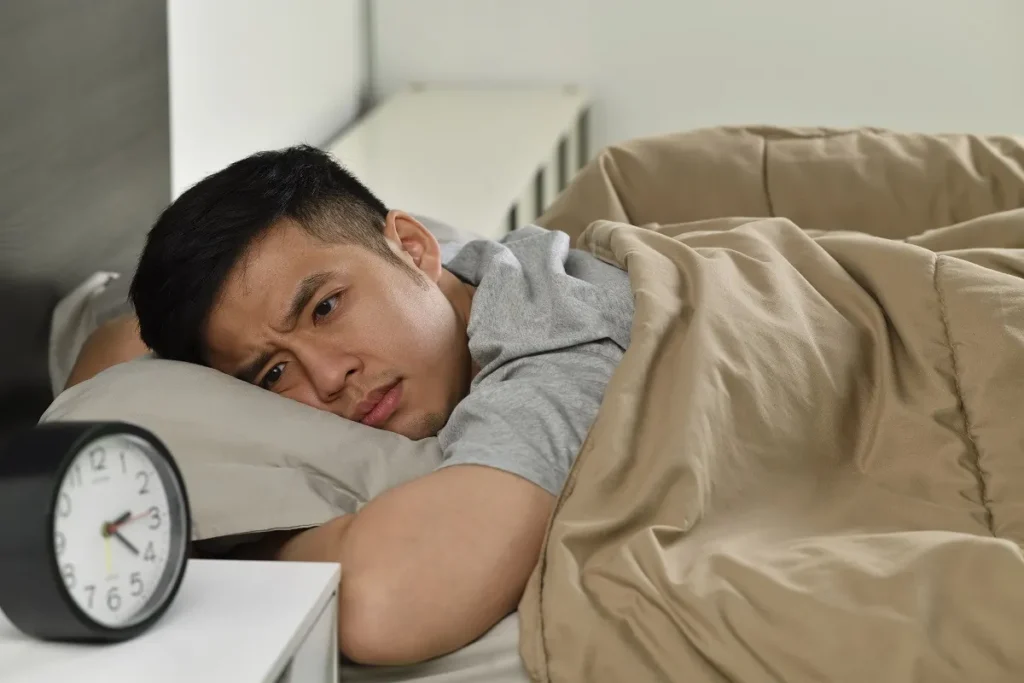
You know those moments when you’re drifting off and suddenly see something vivid — maybe a flash of color, a person’s voice, or a shape at the edge of your bed? For most people, it’s fleeting. But for someone with narcolepsy, those experiences — called hypnagogic or hypnopompic hallucinations — can feel like living inside a dream you didn’t sign up for.
These hallucinations often occur alongside sleep paralysis, and they’re part of the same phenomenon: REM sleep intruding where it doesn’t belong. In simple terms, your brain’s dream projector turns on while you’re still half-awake.
That’s why people with narcolepsy sometimes describe vivid dreams that blur into reality — hearing music, seeing figures, or even feeling a touch that isn’t there (tactile hallucinations).
It’s unsettling, sure, but it’s also deeply revealing of how brain activity, muscle movement, and sleep stages overlap. The American Academy of Sleep Medicine explains that these moments are caused by irregular transitions between wakefulness, REM, and non-REM phases — something common in both narcolepsy type 1 and type 2.
Here’s a look at how they differ from typical dreaming:
| Experience | Awareness Level | Emotional Impact | Common in Narcolepsy? |
| Regular dreams | Fully asleep | Mild | ❌ Rarely |
| Lucid dreams | Partially aware | Mixed curiosity | ⚠️ Sometimes |
| Hypnagogic/hypnopompic hallucinations | Half-awake | Often intense or frightening | ✅ Frequently |
If you scored high on the Do I Have Narcolepsy Quiz and these descriptions sound a bit too familiar, that’s a sign to seek further sleep testing — especially a Multiple Sleep Latency Test at a sleep lab. It helps measure how quickly you reach REM sleep, which is often unusually short for narcoleptic individuals.
Pro Tip: You can use an app or a smartwatch to track sleep patterns and REM cycles at home. Bring this data when you visit a sleep center — it helps your healthcare provider spot patterns that might otherwise get lost in conversation.
V. Sign #5: Fragmented Night Sleep and Insomnia
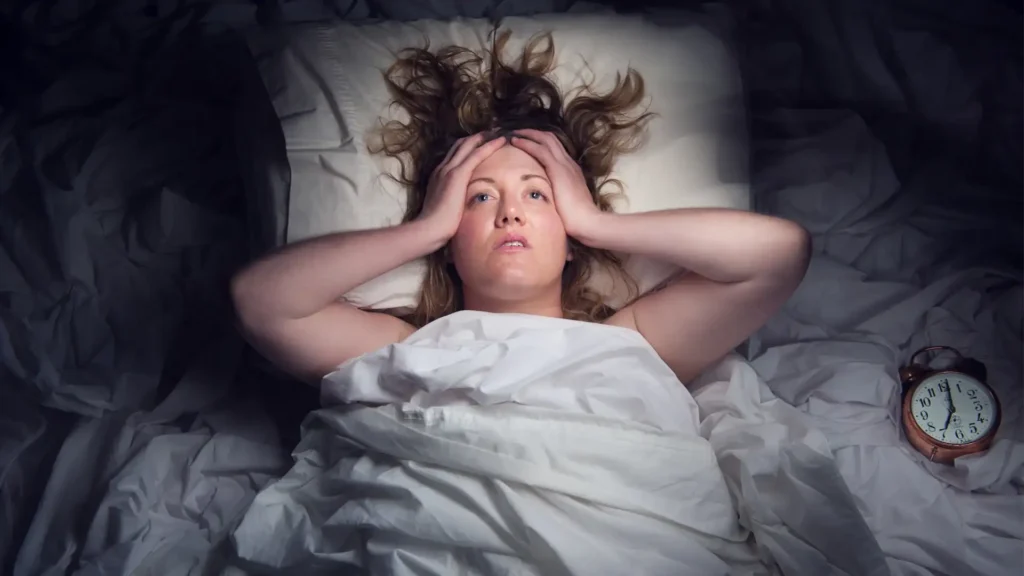
Here’s the irony — people with narcolepsy often sleep too much and too little at the same time. Sounds contradictory, right? But it’s true. You might crash hard at night, only to wake up every couple of hours, restless and disoriented.
Then, the next day, you can’t stay awake no matter how much coffee you drink. It’s this frustrating cycle of fragmented sleep, something many who take the Do I Have Narcolepsy Quiz recognize only after tracking their sleep patterns for a while.
You see, narcolepsy doesn’t just cause daytime sleep attacks; it also disrupts nighttime sleep architecture — the natural flow between REM and non-REM stages. Your brain gets confused about when to rest deeply and when to dream.
You might drift into REM sleep almost immediately, skipping the restorative stages that refresh your body. That’s why people with narcolepsy can sleep for 8 or even 10 hours and still wake up exhausted.
According to the American Academy of Sleep Medicine, this fragmentation can mimic insomnia or even sleep apnea, but the underlying cause is neurological — not behavioral. And while improving sleep hygiene helps, it usually isn’t enough on its own.
Some common nighttime patterns seen in narcoleptic individuals:
- Frequent awakenings (sometimes every 90 minutes)
- Vivid, emotionally charged dreams
- Trouble falling back asleep after waking
- Body jerks or restlessness during early REM sleep
- Feelings of mental fog in the morning despite “enough sleep”
Pro Tip: Keep a two-week sleep diary noting sleep times, dreams, and paralysis episodes to help your doctor identify narcolepsy or other sleep issues.
You can also discuss treatment options like sodium oxybate or orexin receptor agonists, which some specialists use to consolidate sleep and reduce excessive daytime sleepiness.
Here’s a small comparison of what sets narcoleptic insomnia apart:
| Condition | Typical Sleep Pattern | Dream Activity | Restoration Level |
| Normal sleep | 7–8 hrs, 1–2 REM cycles | Balanced | ✅ High |
| Insomnia | Difficulty falling asleep | Minimal | ⚠️ Low |
| Narcolepsy | Frequent awakenings, REM at onset | Vivid, fragmented | ❌ Very low |
It’s frustrating, sure, but understanding this pattern is a step toward better management — and maybe a reason to schedule that sleep study or MSLT you’ve been putting off.
VI. Sign #6: Sudden Sleep Attacks During the Day
This is where narcolepsy becomes truly disruptive — those sudden, uncontrollable naps that strike without warning. You could be typing an email, eating lunch, or even standing — and your brain just shuts down. It’s called a sleep attack, and it’s one of the more misunderstood symptoms revealed by the Do I Have Narcolepsy Quiz.
These episodes aren’t like regular tiredness. They’re abrupt transitions from wakefulness to REM sleep, skipping all the normal signals. You might wake up seconds or minutes later, confused and embarrassed, sometimes not even realizing you’d fallen asleep.
It’s not rare, either. The Multiple Sleep Latency Test often confirms these micro-sleeps by measuring how quickly a person falls asleep during daytime naps in a sleep lab. For people with narcolepsy, it usually takes less than eight minutes — sometimes as little as three.
Here’s how sleep attacks differ from simple drowsiness:
| State | Awareness Before Sleep | Control Over Sleep Onset | Typical Duration | Common In |
| Normal fatigue | Aware | High | Several hours | Everyone |
| Sleep attack | Sudden | None | Seconds–minutes | Narcolepsy / Hypersomnia |
These attacks can be dangerous — especially while driving or operating machinery. That’s why sleep specialists often recommend lifestyle adjustments, strategic scheduled naps, and sometimes medication like modafinil or serotonin reuptake inhibitors to stabilize wakefulness.
If your quiz score or daily experience includes these daytime sleep attacks, don’t wait to see a healthcare provider. They might recommend Cognitive Behavioral Therapy (CBT) for fatigue management or discuss sleep hygiene routines tailored to your sleep-wake cycle.
Pro Tip:
Take 10–20 minute scheduled naps daily—research shows consistent nap timing helps reduce sleep attacks and boosts alertness better than caffeine.
You can also review your insurance plan before scheduling a sleep study — many policies cover sleep laboratory testing for disorders like narcolepsy or idiopathic hypersomnia if supported by quiz results or doctor’s referrals.
VII. Sign #7: Memory, Focus, and Mood Problems
One thing people rarely connect to narcolepsy — until they take the Do I Have Narcolepsy Quiz — is how much it affects memory, mood, and focus. It’s not just being sleepy; it’s like your brain keeps short-circuiting during the day. You forget what you were saying mid-sentence or lose your train of thought halfway through a task.
This “mental fog” (often called narcoleptic cognitive dysfunction) stems from how REM sleep intrudes on wakefulness. Your brain never fully rests, so even when you’re awake, it’s running in an energy-saving mode. That’s why people with excessive daytime sleepiness often describe feeling like they’re dreaming with their eyes open.
Some common cognitive symptoms seen in narcolepsy include:
- Short-term memory lapses (misplacing items, forgetting appointments)
- Difficulty concentrating during meetings or study sessions
- Slow reaction times
- Trouble multitasking
- Emotional swings — irritability, anxiety, or sadness
And then there’s the emotional side — which people don’t talk about enough. Because the condition’s misunderstood, many patients experience social withdrawal, embarrassment, or even depression.
According to the Sleep Foundation, untreated narcolepsy can double the risk of mood disorders due to chronic exhaustion and social isolation.
Here’s how it compares with other conditions that cause fatigue:
| Condition | Core Issue | Typical Mood Symptoms | Cognitive Impact |
| Narcolepsy | REM intrusion, low orexin levels | Anxiety, irritability, apathy | Memory lapses, fogginess |
| Depression | Low serotonin/dopamine | Sadness, hopelessness | Low motivation |
| ADHD | Attention regulation deficit | Impulsivity, frustration | Distractibility, poor focus |
Pro Tip:
Use the Pomodoro method—25-minute focus blocks with short breaks—and add quick mindfulness sessions to reduce fatigue and boost focus.
Remember: when your brain can’t organize its rest, your emotions follow suit. That’s not weakness — it’s neurology.
VIII. Sign #8: Sudden Weight Gain and Metabolic Changes

Here’s something that surprises a lot of people after they take the Do I Have Narcolepsy Quiz — unexplained weight gain. It’s not just from inactivity or overeating. It’s biological. Narcolepsy disrupts the hypothalamus, the brain’s control center for appetite, metabolism, and energy.
Basically, your brain stops producing enough orexin (also called hypocretin) — a neuropeptide that regulates wakefulness and hunger. Low orexin means your metabolism slows down, your energy expenditure drops, and your appetite (especially for carbs) spikes. That’s why even with normal eating habits, people can gain 10–20 pounds in the first year after symptoms appear.
Some additional metabolic changes associated with narcolepsy:
- Slower metabolism and increased fat storage
- Higher levels of leptin resistance (making it hard to feel full)
- Reduced spontaneous activity due to daytime sleepiness
- Altered cortisol rhythms (linked to stress-related weight gain)
According to a Harvard sleep research review, these changes mirror patterns seen in mild metabolic syndrome — increased abdominal fat, insulin resistance, and sluggish energy production.
Here’s a snapshot comparison:
| Factor | Normal Metabolism | Narcoleptic Metabolism |
| Orexin levels | Balanced | Severely reduced |
| Appetite | Normal hunger-satiety rhythm | Cravings for carbs/sweets |
| Energy use | Stable | Decreased |
| Weight changes | Gradual | Rapid gain |
Pro Tip:
If you’re gaining weight with daytime sleepiness, add light movement after naps and consult a dietitian familiar with narcolepsy-related metabolism.
Also, don’t be too hard on yourself — it’s not just “willpower.” It’s brain chemistry. And once your sleep-wake cycle improves (often through medication or behavioral therapy), your weight and energy often rebalance gradually.
IX. Sign #9: Microsleeps and Automatic Behavior
If you’ve ever zoned out mid-conversation or found yourself typing nonsense without realizing you’d “fallen asleep” for a few seconds, that’s what’s known as a microsleep. It’s one of the most alarming red flags revealed by the Do I Have Narcolepsy Quiz, and it’s often mistaken for simple distraction or burnout.
A microsleep is a sudden, uncontrolled episode where your brain briefly switches from wakefulness to REM-like activity, even though your eyes may remain open. These can last just a few seconds — but in those moments, you’re effectively unconscious.
People with narcolepsy often experience these alongside automatic behavior — where the body keeps performing familiar actions while the brain “checks out.” You might keep typing, walking, or even cooking, but with no memory of what just happened. It’s unsettling and potentially dangerous, especially when driving or using machinery.
Common examples include:
- Writing or typing repeated words without realizing it
- Walking into rooms and forgetting why
- Responding incoherently in conversations
- Drifting off during class or meetings
- Missing entire moments or sentences you “thought” you heard
Pro Tip:
Track any brief “blackouts” in a sleep log or smartwatch app to help your doctor identify possible microsleeps or other sleep disorders.
Here’s how microsleeps differ from simple zoning out:
| Feature | Daydreaming / Fatigue | Microsleep (Narcolepsy) |
| Awareness | Partial | Completely lost |
| Duration | 5–60 seconds | 1–30 seconds |
| Eye movement | Focused or wandering | Blank, unfocused |
| Recall after event | Usually yes | Typically none |
| Trigger | Boredom, low interest | Sudden, uncontrollable |
Because microsleeps can happen anytime, people often develop coping habits without realizing it — extra caffeine, fidgeting, or overcompensating with energy bursts. But until you address the underlying narcolepsy, those quick fixes only mask the exhaustion.
If you scored high on the Do I Have Narcolepsy Quiz and notice this kind of “blank behavior,” it’s a clear signal to schedule a professional sleep disorder evaluation.
How to Get Diagnosed: Sleep Studies, Tests & Next Steps
If you’ve read this far, maybe you’ve seen yourself in more than one of these signs — and honestly, that’s enough reason to take action. The Do I Have Narcolepsy Quiz isn’t a diagnosis tool, but it can point you in the right direction toward proper testing and care.
A sleep disorder diagnosis for narcolepsy usually involves two key tests:
- Polysomnography (PSG) – An overnight sleep study where your brain waves, breathing, muscle movement, and heart rate are monitored to rule out other sleep disorders like sleep apnea or restless leg syndrome.
- Multiple Sleep Latency Test (MSLT) – Done the next day, this measures how quickly you fall asleep during several scheduled naps. Falling asleep in under 8 minutes and entering REM sleep in at least two of them strongly suggests narcolepsy.
Additional diagnostic tools might include:
- CSF hypocretin test – Measures orexin levels in spinal fluid (low levels confirm narcolepsy type 1).
- Epworth Sleepiness Scale (ESS) – A self-assessment to measure daytime sleepiness severity.
- Actigraphy – A wrist-worn monitor that tracks sleep-wake cycles over days or weeks.
Here’s a quick reference table summarizing what happens during a sleep evaluation:
| Test Name | Purpose | Duration | What It Detects |
| Polysomnography | Monitors brain, heart, breathing | Overnight | REM onset, apnea, movements |
| MSLT | Measures nap onset & REM transition | 4–5 hours (daytime) | Narcolepsy vs. hypersomnia |
| CSF Hypocretin | Neurochemical confirmation | Single sample | Type 1 narcolepsy |
| Actigraphy | Tracks real-life sleep patterns | 1–2 weeks | Circadian rhythm disruption |
Pro Tip:
Bring a two-week sleep diary to your sleep study and avoid caffeine, alcohol, or sedatives 24 hours before for accurate results.
After diagnosis, treatment often includes wake-promoting medications (like modafinil or solriamfetol), REM-suppressing antidepressants, and structured sleep schedules with planned naps. But lifestyle adjustments — like optimizing sleep hygiene and stress management — are just as vital for long-term stability.
Lifestyle Management & Treatment Options
So… say you’ve taken the Do I Have Narcolepsy Quiz, maybe seen a sleep specialist, and finally have some clarity. What now? Honestly, this is where life begins to feel manageable again — even if the road ahead looks a little patchy. Narcolepsy doesn’t go away, but your control over it? That can grow every day.
Treatment usually starts with medication — things that help you stay awake during the day and rest deeper at night.
Here’s what a typical plan might include:
| Treatment Type | Example Medications | Purpose |
| Wake-promoting agents | Modafinil, Armodafinil, Solriamfetol | Improve alertness and focus |
| REM-suppressing antidepressants | Venlafaxine, SSRIs, SNRIs | Reduce cataplexy and vivid dreams |
| Sodium oxybate | Xyrem, Xywav | Deepen nighttime sleep; prevent sleep attacks |
| Orexin receptor agonists (emerging) | Pitolisant (Wakix) | Regulate sleep-wake cycles naturally |
But even the best medication won’t fix poor sleep hygiene or irregular sleep patterns. Think of treatment as a mix of science and daily rhythm — one supporting the other.
Some people find real relief in Cognitive Behavioral Therapy (CBT), especially for managing frustration, depression, or anxiety that often accompany sleep disorders. Others rely on a mix of practical strategies — gentle morning exercise, mindful naps, protein-rich meals, and small, realistic goals.
Here’s what can help balance your day-to-day:
- Set regular sleep times. Try to go to bed and wake up within the same 30-minute window each day.
- Plan short naps. 15–25 minute naps around midday can restore alertness without affecting nighttime sleep.
- Mind your meals. Heavy carbs and sugar can worsen drowsiness. Go for slow-burning energy foods — oats, nuts, and veggies.
- Move daily. Even a 10-minute walk after lunch stabilizes brain activity and improves circulation.
- Stay hydrated. Dehydration worsens fatigue and affects muscle movement and focus.
- Track symptoms. Keep a sleep diary or use a sleep-tracking app to detect patterns and share with your healthcare provider.
Pro Tip:
Take short naps in late morning and early afternoon — a method recommended by the AASM for managing narcolepsy and daytime sleepiness.
And remember — no single method works for everyone. Some patients thrive with medication and structured routines; others rely heavily on lifestyle changes and social support. Finding your rhythm might take time, and that’s okay.
Prevention, Myths & Early Awareness
There’s a common misconception that narcolepsy is something you can “prevent” with better habits. Not quite. Since it’s often linked to autoimmune factors, genetic components, and orexin neuron loss, prevention in the traditional sense isn’t realistic. But early awareness and symptom management — that’s where real prevention begins.
People often confuse narcolepsy with chronic sleep deprivation, burnout, or depression. It’s not unusual — the symptoms overlap. But here’s the key difference: while sleep-deprived people can catch up with rest, those with narcolepsy can’t fix it by sleeping more.
Let’s break down a few myths that often come up when people take the Do I Have Narcolepsy Quiz:
| Myth | Reality |
| “Narcolepsy only happens to people who stay up all night.” | It can affect anyone, regardless of schedule. |
| “People with narcolepsy are just lazy.” | It’s a neurological sleep disorder, not a motivation issue. |
| “More caffeine will help.” | Caffeine can mask symptoms, not cure them — and may worsen sleep quality. |
| “Narcolepsy is rare.” | It’s underdiagnosed — many cases remain unrecognized for years. |
| “If I don’t collapse when I laugh, I don’t have it.” | Only some patients experience cataplexy. Others have narcolepsy type 2 without muscle weakness. |
If you think you might be showing early narcoleptic symptoms, don’t wait. Schedule a sleep evaluation at a certified sleep disorders clinic or ask for a referral to a sleep specialist. Tests like the Multiple Sleep Latency Test, Swiss Narcolepsy Scale, or even self-assessments from the Mapi Research Trust can provide helpful insight into your sleep-wake cycle.
Pro Tip:
Use tools like the FOSQ or NSSQ to track your daily energy, functioning, and treatment progress for better doctor evaluations.
In the end, it’s not about labeling yourself — it’s about understanding what your body’s been trying to say. Awareness, even without a diagnosis, gives you power.
Living Well with Narcolepsy: Real Stories & Everyday Strategies
At some point, you stop seeing narcolepsy as this mysterious shadow that just “happens” to you — and start seeing it as something you can live with, work around, even grow through. It sounds odd, maybe, but many people who score high on the Do I Have Narcolepsy Quiz later describe a kind of calm acceptance once they understand their patterns. The fear eases up. Life starts to reorganize around awareness.
There’s this one story — a woman I met at a sleep disorders clinic, who said she used to fall asleep at her desk mid-email. She’d wake to find whole paragraphs of half-typed words.
After diagnosis, she began tracking her sleep patterns using a smartwatch and started scheduling naps right before her energy dips. Within weeks, her focus and mood shifted. “It’s not perfect,” she said, “but now I feel in sync with my body — not fighting it.”
And that’s the key. Living with narcolepsy isn’t about chasing a cure; it’s about designing a life that fits your rhythm.
Here are some real-life coping tips that come from both science and lived experience:
- Anchor your mornings. Wake at a consistent time, expose yourself to sunlight, stretch, hydrate — it sets your sleep-wake cycle naturally.
- Plan your energy, not your hours. Schedule demanding tasks when you’re most alert, and gentle ones near nap times.
- Use reminders. Apps, alarms, sticky notes — anything that helps you track sleepiness cycles and medication timing.
- Exercise lightly but regularly. Yoga, walking, swimming — they regulate brain chemistry and stabilize REM transitions.
- Nurture your emotional health. Therapy, mindfulness, or Cognitive Behavioral Therapy (CBT) can help manage social anxiety and fatigue-related frustration.
- Stay connected. Joining narcolepsy support groups or online sleep health communities helps ease isolation and provides shared wisdom.
Pro Tip:
Join programs like the Narcolepsy Network or Emory Sleep Center for expert guidance, FOSQ tools, and supportive community meetups.
When you build habits around your condition — instead of against it — the unpredictability softens. You stop dreading what might happen next and start planning for what you can control: good sleep hygiene, balanced meals, and social moments that refill you instead of draining you.
Support, Resources & Next Steps
If you’ve made it this far, you’ve probably realized that the Do I Have Narcolepsy Quiz isn’t really about scoring points — it’s about opening a door. Awareness. Validation. A quiet sense of, “Oh, maybe that’s what’s been happening.”
Your next step isn’t to panic — it’s to gather clarity and reach out. A healthcare provider or sleep specialist can help arrange a comprehensive narcolepsy test at a sleep center or sleep facility, often using sleep laboratory testing and clinical assessments based on your quiz responses and symptoms.
To make that easier, here’s a list of trusted organizations and resources that offer guidance, research updates, and real-world patient support:
| Resource / Organization | Focus Area | What You’ll Find |
| Narcolepsy Network | Awareness & support | Patient stories, advocacy, educational webinars |
| American Academy of Sleep Medicine (AASM) | Clinical guidelines | Accredited sleep labs, treatment protocols |
| NIH Sleep Disorders Center | Research & testing | Clinical studies and ongoing trials |
| Mapi Research Trust | Diagnostic tools | Standardized narcolepsy scales and surveys |
| Sleep Education (AASM Initiative) | Patient information | Practical advice for better sleep hygiene |
| Local Sleep Disorder Clinics (e.g., Manse Medical) | Diagnosis & care | Sleep evaluation, insurance plan info, reviews |
| Online Sleep Health Communities | Peer support | Sharing experiences, managing lifestyle factors |
Pro Tip:
Before your appointment, bring your sleep diary, a list of medications or caffeine habits, any quiz results, and key questions for your doctor.
And don’t forget your emotional well-being. Narcolepsy often carries hidden social limitations — the anxiety of explaining why you doze off mid-conversation, or the guilt of canceling plans because of fatigue. Having a support group or online community can make that burden lighter.
Whether you end up diagnosed or not, awareness gives you agency. Track your sleep disturbances, talk openly with your doctor, and treat every step as progress toward stability. Sleep is not a weakness to fix — it’s a rhythm to relearn.
Frequently Asked Questions
1. How accurate is the “Do I Have Narcolepsy Quiz”?
The quiz gives you a helpful starting point — a way to recognize possible signs of narcolepsy like excessive daytime sleepiness, sleep paralysis, or cataplexy. But it’s not a diagnosis. Only a sleep specialist can confirm it using tools like a multiple sleep latency test (MSLT) and overnight polysomnography.
2. What happens after I take a narcolepsy quiz online?
If your results suggest moderate or high risk, the next step is booking a sleep evaluation with a sleep medicine doctor. They’ll look at your sleep history, run diagnostic tests, and rule out conditions like sleep apnea or restless leg syndrome that can mimic narcolepsy symptoms.
3. Can stress or lifestyle cause narcolepsy-like symptoms?
Sometimes, yes. Chronic stress, poor sleep hygiene, and irregular sleep schedules can lead to REM cycle disruption and daytime fatigue that feels similar to narcolepsy. But true narcolepsy involves a neurological imbalance — specifically, loss of hypocretin in the brain.
4. How do doctors diagnose narcolepsy officially?
Doctors diagnose narcolepsy through an overnight sleep study and a daytime nap test (MSLT) to assess sleep patterns and REM onset. In some cases, a CSF hypocretin test is done to confirm whether it’s narcolepsy type 1 or type 2.
5. Can I live a normal life with narcolepsy?
Yes — absolutely. Many people living with narcolepsy thrive once they learn to manage triggers and schedule rest smartly. The key is balancing sleep consistency, healthy nutrition, and realistic self-care. Some even find that their energy management becomes more mindful than before.
6. Is narcolepsy hereditary or genetic?
Partly. Certain genetic markers — especially the HLA-DQB1*06:02 gene — increase risk, but environment, infections, and autoimmune factors play a role too. So while it can run in families, it’s not purely genetic.
7. Can I take a reliable narcolepsy test at home?
You can take an online narcolepsy quiz or sleepiness self-assessment to gauge symptoms, but only a sleep clinic can run the clinical tests that confirm a diagnosis. Think of quizzes as filters — they point you toward next steps rather than provide certainty.
8. What lifestyle changes help reduce narcolepsy symptoms?
Making small daily lifestyle changes can really help manage narcolepsy symptoms. Keeping a consistent sleep schedule, avoiding caffeine before bed, taking planned naps, staying active, and tracking your sleep can all improve alertness and sleep quality.
9. What are common triggers that worsen narcolepsy?
Irregular sleep hours, emotional stress, sleep deprivation, alcohol, and certain medications can all worsen cataplexy or increase daytime sleepiness. Maintaining a calm, structured routine helps your REM cycle stay stable.
10. Where can I find narcolepsy support and resources?
You can find narcolepsy support through groups like the Narcolepsy Network, Project Sleep, and the AASM. Online forums and local sleep groups also offer helpful community connections.


